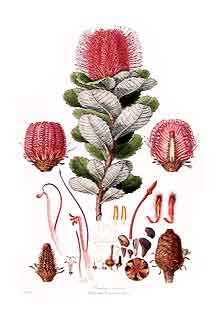the NPK story
Ever wondered, when buying plant fertiliser, what the numbers sometimes seen in a group of 3 mean—for instance, 9 / 2 / 6 ?
They show the breakdown of NPK in nutrient content.
 This is what I learnt about NPK at Burnley Horticultural College, University of Melbourne :
This is what I learnt about NPK at Burnley Horticultural College, University of Melbourne :
Nitrogen (N) is for growing leaves etc, Phosphorus (P) for water translocation—the root system and getting the water to the leaves, and Potassium (K) for flower & fruit growth.
Now, if when using fertilisers, you want plant growth—foliage etc, ensure that the N number is higher than the K—for example : 9 / 2 / 6.
For flowering / fruiting, use fertiliser where the K is higher than the N.
That’s what flower growers do for Mother’s Day. They ‘push’ a high K (Potassium) NPK exactly 5 weeks before the Day to ensure the plants flower on the Day.
So, during the growing season or when a plant has no great display of flowers use a fertiliser that’s natural—like Charlie Carp (fish emulsion) which is made from all the blessed exotic fish that screw up our natural environs. Its NPK is 9 / 2 / 6 (with K lower than N).
Then when flowering or setting fruit, you could use plant fertiliser like Thrive (made by Yates) which has an NPK of 15 / 4 / 26. Note the K (Potassium) is much higher than the N (Nitrogen).
 From plant family Proteaceae
From plant family Proteaceae
flowers, leaves and fruit of Banksia coccinea, from Ferdinand Bauer’s 1813 Illustrationes Florae Novae HollandiaeThe thing to know, though, is that while Thrive is brilliant stuff, because it is manufactured chemicals (sulphates etc) it is a salt. And overdoing salts will kill your plant.
Here’s something about P (Phosphorus) as in NPK. In the plant family Proteaceae which is distributed in the Southern Hemisphere and comprises about 80 genera with about 1600 species including Proteas, Banksias, etc, the NPK should have no more than 2% P. For this family low nutrient feeding is vital as over-feeding will result in nutrient toxicity which will be evident as leaf burn. Pig and poultry manure (like Yates Dynamic Lifter) should be avoided. Slow release fertilisers formulated for Australian native plants are the most suitable.
Happy fertilising :D



